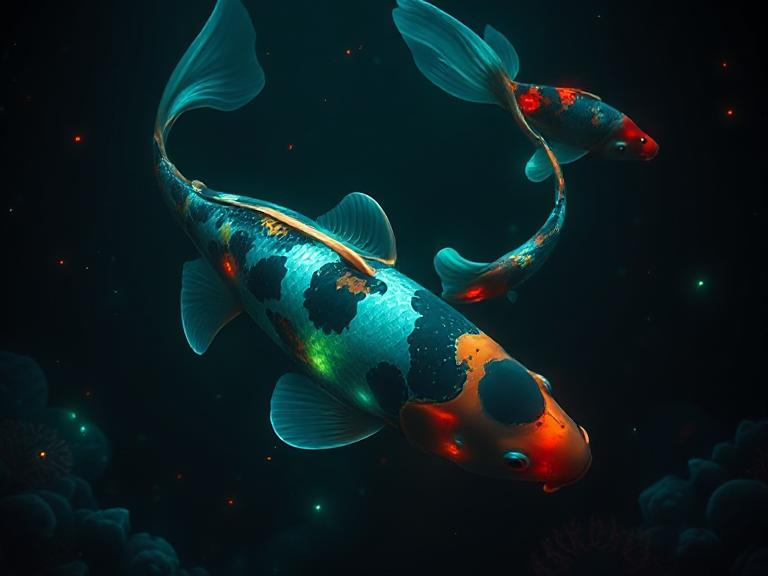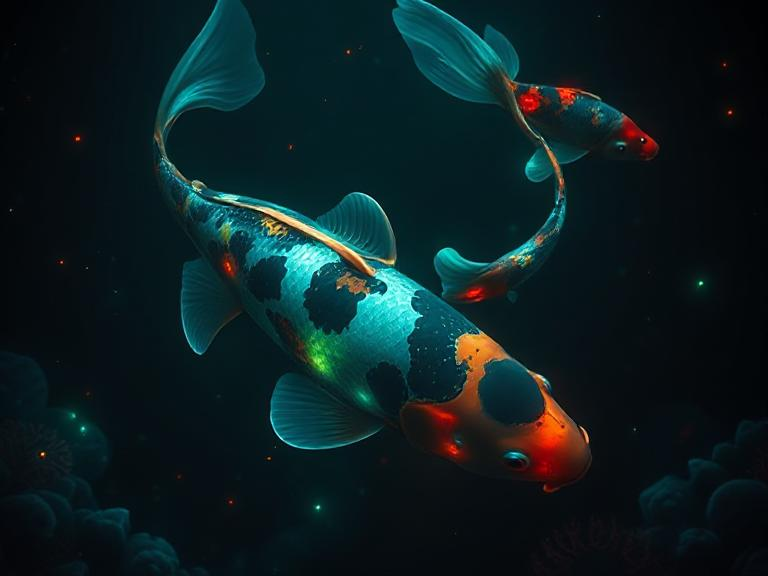
Breeding koi fish is an intricate and highly specialized process that has intrigued hobbyists and professionals alike for generations. The goal is often to produce fish with the most desirable traits, such as vibrant colors, symmetrical patterns, and excellent health. This article explores the essential aspects of koi fish breeding, from selecting the right pair to caring for the offspring.
Selecting Breeding Pairs
One of the first and most important steps in koi breeding is selecting the right breeding pair. Breeders look for koi with ideal traits such as vibrant colors, clear patterns, and healthy body structure. The genetic lineage of the koi also plays a significant role in determining the outcome of the breeding process. Most breeders use koi that have been bred from renowned bloodlines, as this increases the likelihood of producing high-quality offspring.
The pairing of male and female koi is done carefully. Female koi are typically larger and more mature than males, and their eggs are fertilized externally by the male during spawning. The breeding season usually occurs in late spring or early summer when water temperatures are optimal for breeding.
The Spawning Process
Once the breeding pair has been selected, the spawning process begins. This usually involves placing the male and female koi into a separate breeding pond. The female koi will release eggs, and the male will fertilize them with milt. Koi are known for their relatively easy spawning, but successful fertilization requires the right water conditions and plenty of space for the fish to move around.
After spawning, the fertilized eggs are left to hatch, which typically takes about four to seven days, depending on the water temperature. The eggs are usually kept in a separate area to prevent them from being eaten by the adult koi.
Raising the Fry
Once the koi fry (baby koi) have hatched, they are very small and fragile. At this stage, they rely on their yolk sacs for nutrition. After a few days, they begin to swim freely and search for food. Breeders often start by feeding them special koi fry food, which is formulated to provide the essential nutrients needed for growth.
Raising koi fry requires patience and attention. The water quality must be maintained at an optimal level, and the fry should be kept in a well-maintained, clean pond or tank. As they grow, the fry are sorted and examined to determine which ones exhibit the best traits.
Selecting the Best Specimens
As the koi grow, breeders will begin to assess their appearance, including their coloration, pattern, and body shape. The koi that display the most desirable traits, such as vibrant hues and symmetrical markings, are selected for further breeding or sale. Some breeders may also keep koi for several years to see how their colors and patterns develop over time, as some koi change their appearance as they age.
The process of breeding koi fish is not for the faint of heart; it requires knowledge, expertise, and a lot of dedication. However, for those who are successful, the reward is the creation of beautiful, healthy koi that can be cherished for generations.
Conclusion
Koi fish breeding is a skillful art that combines science and nature. By carefully selecting breeding pairs and nurturing the young koi, breeders can produce exceptional specimens that are both stunning in appearance and healthy. While the process requires a great deal of care and attention to detail, the results are highly rewarding for those who are passionate about koi fish. Whether for personal enjoyment or as part of a breeding business, koi fish breeding remains a beloved and respected tradition among aquarists.

